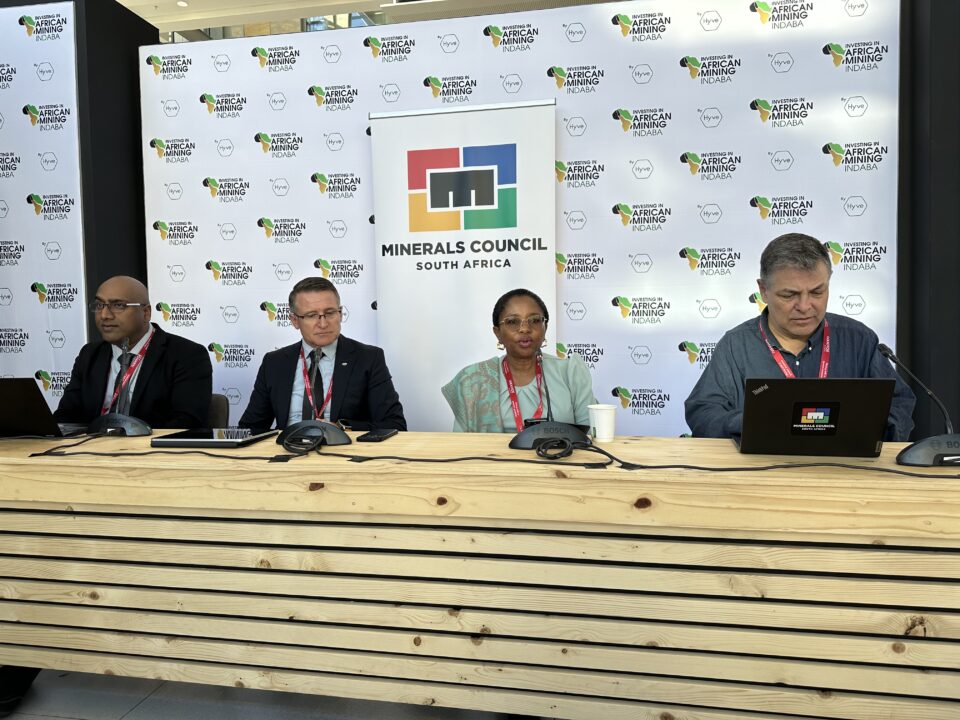Cape Town, 4 February 2025. The Minerals Council South Africa and its members are continuously promoting and enhancing their interventions to eliminate fatalities, injuries and illnesses through the sharing and adoption of leading practices, innovation, and collaboration with key stakeholders to achieve Zero Harm.
The interventions driven by the Minerals Council through dedicated programmes and health and safety teams together with its members, which account for 90% of South Africa’s annual mineral production by value, the Department of Mineral and Petroleum Resources and organised labour have delivered significant step changes in the journey to Zero Harm.
In 2024, the industry reported 42 fatalities, a 24% reduction from 55 in the previous year, and a reduction in injuries to 1,841people, a 16% reduction from 2023 and a lower number of incidents of occupational diseases. The record low number of fatalities last year is confirmation that the industry is firmly on the path to Zero Harm when every employee returns home safely and in good health.
“It is very important that we as CEOs understand that 42 is 42 too many. This is not just a statistic. These are our colleagues we and their family and friends have lost. We must all understand that we must – and can – get to zero,” says Japie Fullard, Chair of the Minerals Council’s CEO Zero Harm Forum.
“It is very heartening that we are reaching these milestones of record low fatalities and injuries on our journey to Zero Harm. The two key reasons for this are the collaboration and shared vision of all stakeholders that Zero Harm is achievable and, very importantly, that we as mining CEOs have honest and open discussions every month about incidents, how they happened and what we learnt from them to eliminate repeats. This is real leadership to eliminate health and safety incidents in our organisations,” he says.
“The more we focus on preventing injuries, the more fatalities will come down. It is not about what we do after events but what we do before the time to make the workplace as safe and healthy as possible,” says Mr Fullard. “There is not a single CEO I deal with who does not believe we can achieve Zero Harm.”
The lagging indicators on safety performance are important but we need to place higher focus on the leading indicators to provide us with “early-warnings” that would assist in incident prevention.
Occupational diseases declined by 17% to 1,864 cases in 2024 from 2,233 the year before.
The Minerals Council has reviewed and recalibrated its Khumbul’ekhaya CEO-led health and safety initiative during 2024 and will launch Khumbul’ekhaya Version 2 later in 2025. Building on CEO Heartfelt Conversations last year, the Minerals Council is building on the learnings the initiative has gathered since it launched the CEO-led health and safety initiative in 2019.
Khumbul’ekhaya Version 2 focuses on critical enhancements to leadership, innovation, and accountability. This strategy embodies our collective vision of Zero Harm, returning every worker home safely and healthy every day. It also emphasises a proactive, human-centred approach to health and safety, incorporating new technologies, robust risk management practices, adoption of proven leading practices, and closer collaboration with all stakeholders.
The Minerals Council is encouraged that its collaboration, interventions and initiatives agreed with its members are resulting in significant step changes towards Zero Harm.
The mining industry has reduced fatalities in three decades by 91% to 42 from 484 in 1994. Injuries have fallen by 78% from 8,347 thirty years ago.
In the past 15 years, TB and silicosis cases have reduced by more than 80%, with the incidence of TB cases falling to 220 per 100,000 employees, which is half the national average for South Africa.
Cases of noise-induced hearing loss in mining have reduced by 55% in the past 15 years and is now coming under particular focus in the Minerals Council.



